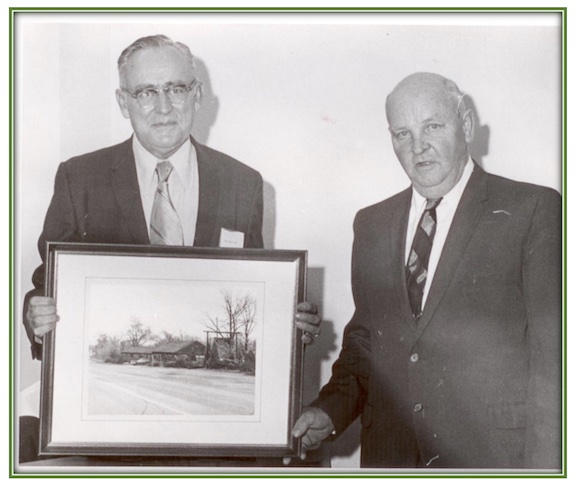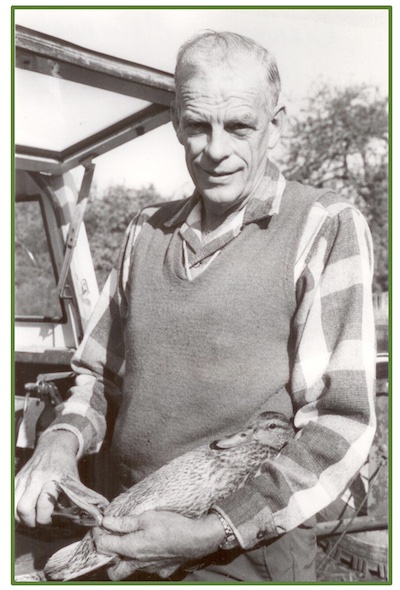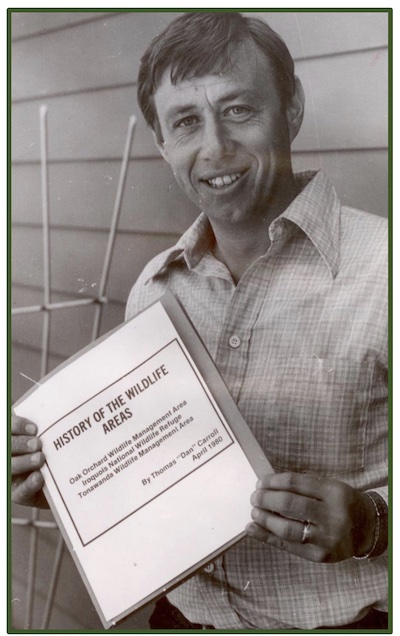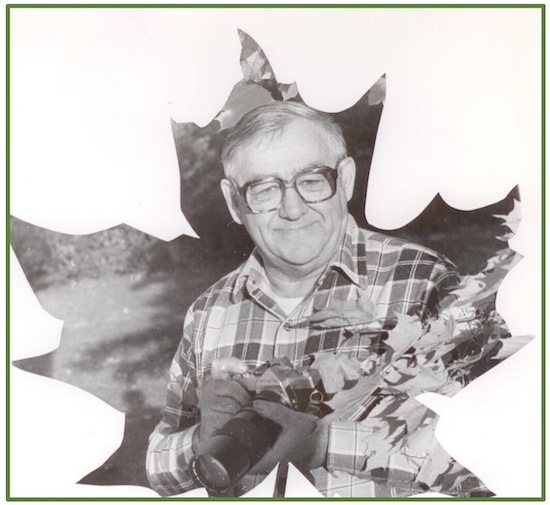Wildlife Service announced plans for local refuge in 1957
Primary goal of 10,828-acre refuge was to protect migratory fowl
By Catherine Cooper, Orleans County Historian
“Illuminating Orleans” – Vol. 3, No. 20
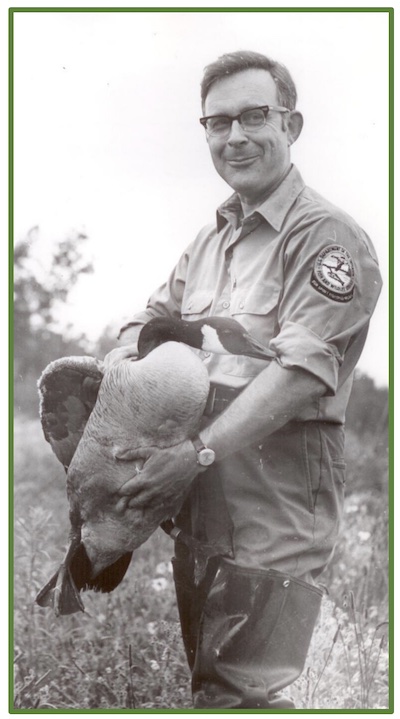
June 1973 – Lawrence S. Smith, shown branding a Canada goose, was the first manager at the Iroquois Wildlife Refuge. Appointed in 1958, he worked there until 1973.
Rushing south or north, we tend to drive through the Swamp area without due consideration of its uniqueness. Some 19,000 acres of natural wetland habitat on our doorstep. An important habitat for migratory birds. Home to a variety of native birds and wildlife. Trails and overlook areas which attract thousands of nature-loving visitors each year.
We referenced the 1947 purchase of the first area refuge, the Oak Orchard Wildlife Management Area, in the previous column. Efforts to conserve the swamp habitat continued through the 1950s.
In 1957, the NYS Dept. of Conservation purchased a 5,600-acre tract of land located primarily in Genesee and Niagara counties, with a small portion in Orleans County. This refuge was named the Tonawanda Wildlife Management Area.
Meanwhile, the Northeast division of the Fish and Wildlife Service indicated that they wished to purchase a large tract of land in the area also. Robert F. Perry, head of the regional NYS Conservation Dept. promoted the already well-established Oak Orchard site and highlighted the potential of the Alabama Swamp area to the west. His efforts bore fruit.
In December 1957 the Wildlife Service announced the authorization of a major wildlife refuge project straddling southern Orleans and northern Genesee counties. Bounded on the west by Dunlap, Oak Orchard Ridge and Tibbetts Roads, on the east by Knowlesville Rd, on the south by Roberts, Casey and Lewiston Roads and on the west by Salt Works Rd., the 10,828 acre Oak Orchard National Wildlife Refuge was intended primarily to provide protection for migratory fowl. Part of the swampland would also be open to hunters at designated times.
The announcement initially generated mixed responses. Since the purchase involved some 20 percent of the Town of Shelby land, there was concern over loss of property tax revenue. An opposition group of Shelby landowners protested the “land grab” of valuable farmland by the Federal government.
Originally named the Oak Orchard National Wildlife Refuge, the site was renamed the Iroquois National Wildlife Refuge in 1964, since the similarity of the names of the two refuges caused confusion.
Several people were instrumental in the promotion and development of this unique resource, including Lawrence S. Smith in the top photo:
October 1970 – Robert F. Perry (left), regional director of the NYS Dept. of Environmental Conservation, principal force behind the development of the Wildlife Refuge. Stephen Champlin (right), representing the Orleans County Federation of Sportsmen’s Clubs, which advocated for the creation of the site.
June 1973 – Oliver D. Meddaugh, principal waterfowl technician, worked at the Wildlife Management Areas for 31 years.
April 1980 – Thomas “Dan” Carroll, who succeeded Oliver Meddaugh, compiled a thorough history of the Wildlife Areas.
October 1988 – Don Cook, sportsman, wildlife enthusiast, photographer, and columnist who chronicled and promoted the Wildlife Refuge.






























